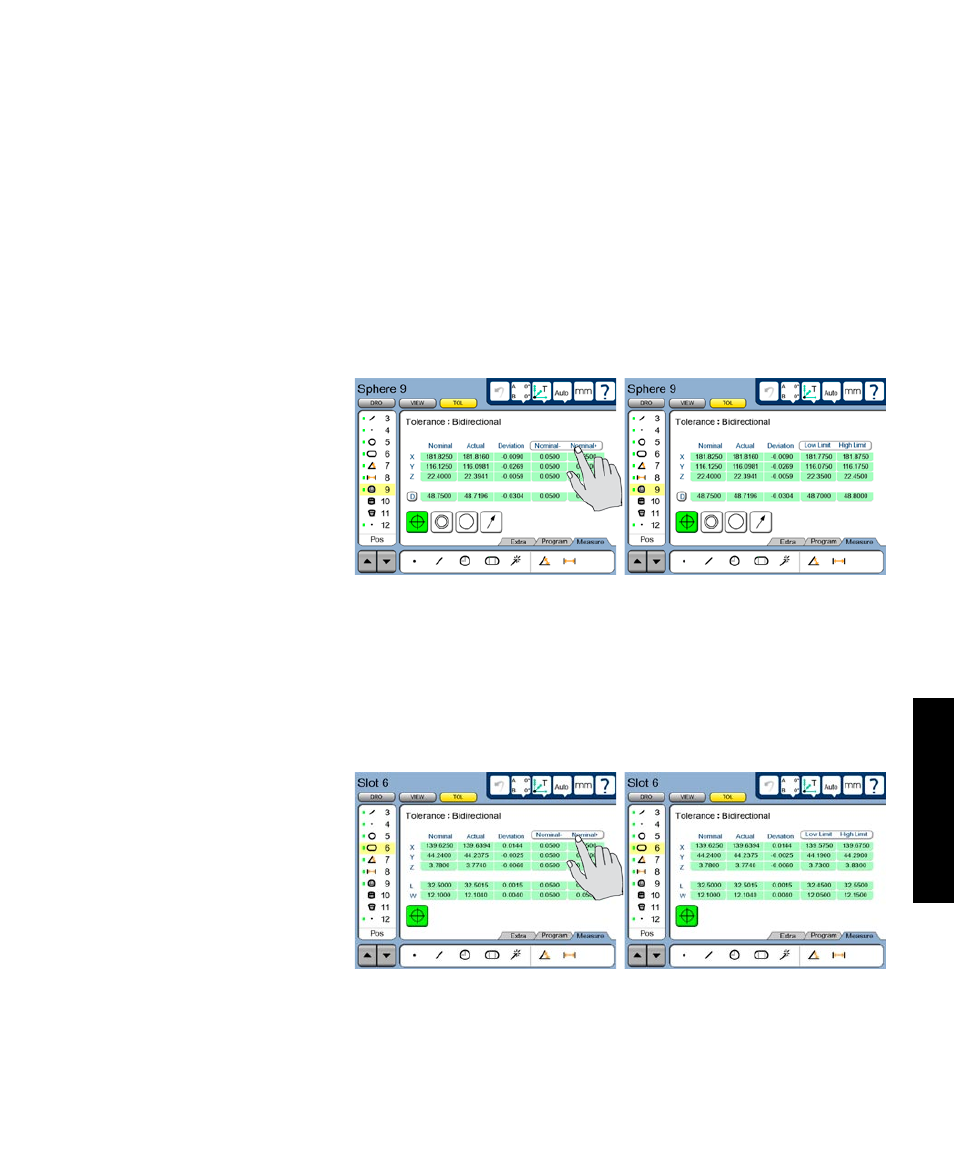HEIDENHAIN ND 1400 User Manual
Page 89

75
7
Tolerancing
Enter the nominal values into the appropriate axis data fields. Enter the allowed limits into the Limit data
fields as +/- ranges or as absolute limits. Touch the Limit data fields to toggle between +/- ranges or
absolute limits.
Circles, arcs and spheres
The tolerance screens for circles, arcs and spheres are identical, and are used to specify the acceptable
deviation from nominal positions in X, Y and Z axes, and from the nominal diameter or radius. The
bidirectional tolerance compares the measured location of the center point of the arc, circle or sphere
to the nominal center point and compares the measured diameter or radius to the nominal. Touch the D
(diameter) or r (radius) choice field in the DRO screen to toggle between the display of diameter and radius
if desired.
Enter the nominal values into the
X, Y and Z axis and D (diameter)
data fields provided. Enter the al-
lowed limits into the Limit data
fields as +/- ranges or as absolute
limits. Touch the Limit data fields
to toggle between +/- ranges or
absolute limits.
Slots and rectangles
The tolerance screens for slots and rectangles are identical and are used to specify the acceptable deviation
from nominal positions in the X and Y axes, and from the nominal length and width. The bidirectional
tolerance compares the measured location of the center point of the slot or rectangle to the nominal center
point and compares the measured size to the nominal size.
Enter the nominal values into the
X, Y and Z axis and L and W data
fields provided. Enter the allowed
limits into the Limit data fields as
+/- ranges or as absolute limits.
Touch the Limit data fields to
toggle between +/- ranges or abso-
lute limits.
Tolerance Types